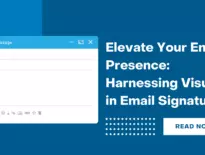Do you ever get the feeling that the devices you own are listening to you? You’ll mention something in conversation, like “what is IVR?” and then all of a sudden, the ad space you see online is filled with companies offering you their interactive voice response systems. It’s a strange sensation, but one that is growing in regularity. The data we produce gets harvested and used by marketers to run more effective campaigns.
The main reason for this is that ads work best when they’re tied contextually to the purpose of the page. Imagine a YouTube video for three recipes you can make with tomatoes—would an advert for a supermarket or a virtual call software company work best there?
 Free to use image from Unsplash
Free to use image from Unsplash
Clearly a supermarket ad would perform better here. This is one of the reasons why some video ads perform better than others, and demonstrates the practice that we’ll discuss in this article: contextual targeting.
In this piece, we’ll explain what contextual targeting is and how it differs from other practices you may already use. We’ll also assess why it’s so relevant now, and share some quick tips to get you started.
What is Contextual Targeting?
Let’s begin by making sure the full definition of contextual targeting is understood. There’s no point in moving on and explaining why you should pick it up or how to do it without first ensuring that we all know what it is we’re talking about. You wouldn’t buy a new ai domain name for your business without doing your research, would you?
Contextual targeting is defined as “the practice of displaying ads based on a website’s content.” So, a website that sells furniture would be a good place to target as a retailer of wood varnish. Or a website that sells musical instruments could be somewhere to consider if you’re in the sheet music business. When it comes to geographic targeting, someone in area code 956 is likely to be more interested in businesses in South Texas than those operating in London, England.
You have a greater chance of gaining meaningful traction by following that logic, rather than going where the biggest audience possible is.
At present, Fandom.com is the world’s 14th most-visited website, with monthly viewing figures of approximately 657.4million. Its popularity is borne out of the opportunity it gives to people to explore a cultural phenomenon such as Game of Thrones or the Marvel Cinematic Universe, with like-minded obsessives.
 Free to use image from Unsplash
Free to use image from Unsplash
Advertising here with a generic product or service because it reaches so many people per month, is the move of an inexperienced marketer. Sure, the overall audience may be massive, but the potential conversion rate is much lower than that of a less popular site that more directly speaks to your target audience.
How Does it Differ From Behavioral Targeting?
By now, quite a lot of the details of contextual targeting will sound familiar to you. This is because you will have been working on behavioral (or audience) targeting, historically. So what is it about contextual targeting that sets it apart—and, in some instances, above—this more tried and tested method? After all, they both deliver specific ads to specific audiences at specific times, in line with their product or service niche.
Behavioral targeting is something that is becoming more nuanced as so many of us now work online daily, often as part of remote teams in a growing number of organizations.
These behaviors are tracked by cookies and include data such as links that have been clicked, the product pages that the user has browsed, and the Google searches they’ve, well, searched for. If the user returns to a site on multiple occasions within a specific time frame or has purchased products from a particular site, this also feeds into behavioral data.
Different segments of the potential customer base can then be targeted via personalized ads. These are often completely separate from context—especially when people use retargeting ads as a way of driving their advertising home.
On the other hand, contextual marketing shifts the focus onto matching the “place” where the browser is viewing the content. Sites such as The Times’ website have a multitude of different sections, and the intention of someone reading an article in their culture section will be very different from someone reading in their financial news section. The likelihood of the reader being interested in your ad on the benefits of AI in sales varies hugely based on which section they’re reading.
 Free to use image from Unsplash
Free to use image from Unsplash
In this context—no pun intended—the ad will more accurately reflect this tonal shift, and is not bothered by the past behaviors or external interests of a particular user. It’s the practice of integrating the content you produce into the style and mood of its surroundings.
Why is Contextual Targeting Important?
So, we’ve looked at what contextual targeting is, and how it is different from other practices with which you may already be familiar. Now let’s look at the vital question of why to bother with it at all. To make any new addition to a marketing plan, there needs to be some reasoning behind it.
For starters, digital marketing has never been so vital. With global average social media usage currently around the 150-minute mark per day, the value of the practice has been matched by the surge in difficulty that most brands have in cutting through the noise and making a real impact.
 Free to use image from Unsplash
Free to use image from Unsplash
This increase in the consumption of content is only going to continue, and while research suggests that we don’t even notice the ads we’re bombarded with any longer, it doesn’t mean all is lost for budding digital marketing professionals.
Marketing in a manner that targets viewers, readers, and browsers on a contextual level allows you to guarantee at least some degree of interest, driving sales and perhaps benefitting your app store ratings in the process. Ad placement is based on the contextual links between the page and your campaign. So, you’re more likely to meet the eyes of a person who’s at least somewhat engaged with your industry.
As regulation becomes restrictive on digital marketers—with governments beginning to take the internet seriously—the old ways of working become untenable. Already, there is a decline in the popularity of behavioral targeting. As such, you should be looking for a technique that achieves almost the same thing but is also legally sound and future-proofed.
Third-party cookies have now been restricted on Safari—Apple’s internet program—and Firefox. With Google positioned to follow in those footsteps, we’re faced with a world in which users can no longer consent to cookie usage, something that is now required by law in several territories and international domains, including the EU.
To operate in this environment, we need something that isn’t beholden to such legislation and doesn’t track users or target them specifically. Contextual marketing makes it safer to achieve tangible, impressive results on campaign time and investment.
Tips for Contextual Targeting

Free to use image from Unsplash
So, you’ve reached this point in the article, and you’re convinced that you want to get started on contextual targeting. Great! Here are a few key tips on what to bear in mind when you’re starting.
- Research: not every ad provider is created equal, so how different ones can help with your contextual targeting efforts will vary. Be sure to check this before choosing who to go with.
- Landing Page: optimization of ads is one hurdle, but crossing it will count for nothing if customers are tripped up by the next one they encounter. Tweaking your landing page to bring it in line stylistically with your ads is a top product branding tip. It’s a great way of upholding consistent customer communications and keeping people interested in your offering.
- Storytelling: by definition, humans are storytellers. We love listening to people telling stories in a variety of ways, so lean into that. Tell your potential customer base the story of your brand in the most appealing way possible.
Conclusion
In this article, we’ve taken a look at the practice of contextual targeting. We’ve outlined what it is and how it differs from behavioral targeting, which is underpinned by basing ad placement on the digital behaviors of the targeted user. We’ve also discussed why it is increasing in popularity and relevance, as well as illustrated some key tips to get you started.
The online world moves at a pace that no technology before has enjoyed. It connects us to businesses and to our interests in a way that nothing else ever has. For marketers around the world, the opportunities that this reality offers are limitless, and keeping on top of the latest trends in this space is often the basis for who is successful and who isn’t.
Being one of the early adopters of contextual targeting would be a great feather in any marketer’s cap. Following the advice and reasoning found in the guide above should stand you in good stead to steal a march on your competition and emerge as a front-runner in your field.








